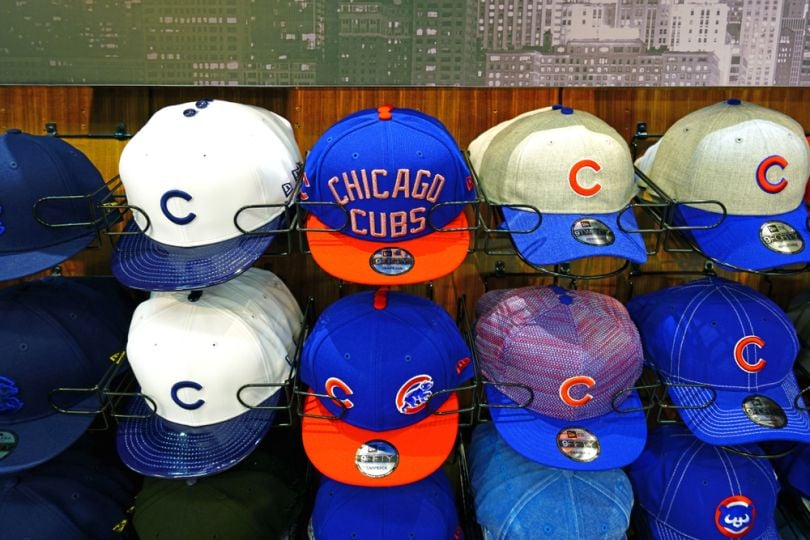The 2019 Chicago Cubs were a lesson in Probability 101.
It all started prior to the season, when a leading projection system didn’t like the Cubs nearly as much as Cubs fans did.
The team was coming off a 95-win season, yet PECOTA, the projection system run by sabermetrics site Baseball Prospectus, had it pegged for a lowly 79–83 finish and for last in the National League Central Division.
Rob Arthur, a freelance contributor to Baseball Prospectus and data science consultant — he’s perhaps best known as the man who helped (literally) get to the core of the sport’s “juiced ball” situation in 2018 — thought the Cubs would actually finish a bit better than the PECOTA projection.
“My feeling is, always take projections as one data point, and also leaven them with your own common sense and prior beliefs,” he told Built In.
But he also pointed out at the time that there were legitimate causes for concern with the 2019 roster. So when the Cubs came out of the gate looking much better than a 79-win team, he heard about it.
“The Cubs have some of the most rabid fans, and they’re very quick to take offense.... For the whole first half of the season, I was getting grief,” he said.
Even Cubs players themselves reportedly used the algorithm’s decree as motivation, and in late May of last year, the team was on pace for a 97-win finish. Every time the club would string together a winning streak, a phalanx of Cubs Nation devotees was happy to direct Arthur’s attention to it.
“All these fans would be sending me tweets saying: ‘You’re garbage. PECOTA is garbage.’ And I would say, ‘Well, let’s wait until the end of the season and see what happens, because I’m not sure the last five games necessarily tell the full story.’”
They did not, in fact, tell the whole story. The team ended with a five-star flop, losing 10 of its last 12 and missing the postseason, solidifying a regression that would’ve fit seamlessly into the team’s pre-championship narrative of haplessness. The team finished 84–78 — better than PECOTA’s projection, but closer to that figure than the postseason sure-thing that fans had envisioned.
The point is not that PECOTA knows all — it didn’t and doesn’t. But it illustrates that the general public often has a very difficult time thinking probabilistically.
The Cubs 2019 rollercoaster points to what is a major reason people often struggle with probability, according to Deborah Rumsey, a statistics professor at Ohio State University: “They fixate on the short-term, rather than thinking long-term.” The distinction is definitional. “[P]robability is the long-term chance that a certain outcome will occur from some random process,” Rumsey wrote in her introductory guide to probability. [Emphasis ours.]

We Tell Ourselves Stories in Order to Deal With Randomness
That long-term lens is the single most important thing people should remember about probability, Rumsey told Built In. But it also ties into a few other common pitfalls. One is the fact that people are very uncomfortable with runs.
To illustrate this, Bill Notz, a colleague of Rumsey at the OSU statistics department and the author of Statistics Concepts and Controversies, will sometimes have students do a coin-toss exercise. (Mathematicians love and find meaning in coin tosses more than anyone this side of Anton Chigurh.)
Notz will ask students to write down what they think the sequence of heads and tails would be if he were to toss a fair coin 20 times — then he tosses a fair coin 20 times. Inevitably, the number of consecutive heads or tails that emerges will outnumber what the students had predicted. When predicting the sequence, students invariably follow two or three tails with a heads. “They really want things to balance,” Notz said.
“The human brain expects more regularity and patterns than randomness actually exhibits,” he added.
“The human brain expects more regularity and patterns than randomness actually exhibits.”
This gets to what’s known as the gambler’s fallacy — the idea that, if a certain outcome is repeating, a different one is imminent. In other words, you’re due. But a coin flip is always 50-50. It’s a misunderstanding of true randomness, which isn’t synonymous with chaos, but rather a long-term order of sorts.
“Randomness is when the same thing has the exact same chance of happening,” Rumsey said.
How deeply do people misunderstand this? Recall the smattering of conspiracy theories when the NFC had 14 consecutive wins in the most high-profile coin toss in America — the Super Bowl coin toss.
The tricky thing is that Notz’s students aren’t wrong to think that a course correction is coming, since the proportion of heads and tails over time will eventually orient to .50. The error is thinking it’ll come in the short term.
This relates to what is another common misconception, according to Rumsey. People forget about the law of large numbers — which essentially says that, the more you do something, the more likely the results head toward their expected value. In hyper-precise coin-flip terms, as flips approach infinity, the proportion approaches 0.50.
That short-term/long-term paradox (so haphazard in a small sample size, not at all in a vast one) perhaps speaks to the simplest explanation of why people struggle. To quote noted statistician David Spiegelhalter, the reason people find probability unintuitive and difficult is because “it is unintuitive and difficult.” Mercy be upon oversensitive North Side Chicago baseball fans.
Don’t Go 50/50
Of course, most real-world probabilities, including baseball, are a fair amount fuzzier than a heads-or-tails binary. Still, people seem to have a terrible time shaking the 50/50 framing. After all, if something either will happen or won’t happen, isn’t that 50/50?
This is something Arthur encounters fairly often among probability-averse fans. Those who have a poor sense of which team is favored ahead of a game tend to default to 50/50. In less unclear situations, they’ll often simply proclaim one side’s absolute advantage over the other. The choices, in their minds, are “impossible,” “50/50” or “certain.” “I think human beings are just sort of hardwired to do view in only those three categories,” he said.
It’s a fundamental misconception that Rumsey also regularly encounters in the classroom. She keeps a sports-related hypothetical handy — if basketball free throws are either/or outcomes, and therefore 50/50 probabilities, why not put her on the line in a championship game? — to help disabuse the impulse.

The Psychology Behind Being Crappy at Probability
These are just a few of the problems laypeople often have with probability. Other common trip-ups include the Linda fallacy (the incorrect assumption that several specific conditions yield higher probabilities than one general condition), Simpson’s paradox (the addition of specific variables can flip expected results) and even the very definition of probability (the subjective vs. relative frequency schools). But the question remains: why so much difficulty?
It’s not that people are dumb. Humans are, in fact, driven by a slew of highly practical psychological principles. The problem, according to the foundational study of human psychology and probability, is that three of those principles — generally “quite useful” — often lead to “severe and systematic errors” when applied to probability.
As outlined by Daniel Kahneman and Amos Tversky (“the Lennon and McCartney of social science,” per The New Yorker) in their landmark 1974 paper, “Judgment Under Uncertainty: Heuristics and Biases,” these three so-called heuristics are representativeness, availability and anchoring.
“Representativeness” means people put way too much stock in similarities. The researchers asked a group whether a person described as shy, withdrawn, helpful and detail-oriented is more likely to be a librarian or farmer. The group chose librarian, discounting a vital fact: Farmers significantly outnumber librarians.
“Always take projections as one data point, and also leaven them with your own common sense and prior beliefs.”
A similar, related error — confusing a random, short sample as highly representative of the larger population’s essential characteristics — lies at the heart of our insistence in “being due” in the gambler’s fallacy, Kahneman and Tversky put forth. To circle back, with the obvious exception that a baseball game is not a coin flip, it also lies at the heart of 2019 Cubs fans’ erroneous insistence that a hot streak might be emblematic of an entire season. (To be fair, neither was the final-weeks faceplant.)
“Availability” means we overestimate the likelihoods that spring to mind easiest. One facet of the availability heuristic is recency bias. “It is a common experience that the subjective probability of traffic accidents rises temporarily when one sees a car overturned by the side of the road,” Kahneman and Tversky wrote.
Noted behavioral economists Cass Sunstein and Richard Thaler gave this example in The New Yorker: People think homicides outnumber suicides. They don’t, but homicides are more “available” — that is, we hear about them in the news much more often than suicides.
Lastly, “anchoring” essentially means people rely too much on early reference points. Kahneman and Tversky asked one group to quickly estimate the product of 8x7x6x5x4x3x2x1 and another to estimate 1x2x3x4x5x6x7x8. Same products, only reversed; same answer. But the two estimates were wildly different.
Things Are Slowly Getting Better
Arthur has had a front row seat to the public’s sometimes ham-fisted ways with probability in other ways too. Another big one was somehow again related to the Cubs.
Eight days before the 2016 presidential election, with Chicago trailing 3–1 in the World Series, Arthur wrote a short FiveThirtyEight post headlined “The Cubs Have a Smaller Chance of Winning Than Trump Does.” The site’s tweet of the article went viral twice — first when the Cubs did, in fact, win, and again when Donald Trump followed suit. “People viewed it as me ruling them out versus saying it’s a long shot,” he said.
Hopefully, in the four years since that election, people have at least stopped conflating improbable with impossible. But the bigger drivers in the public’s better understanding of probability, however slow and gradual, is more directly related to the explosion of data analytics in business and sports, Notz said.
When Arthur is writing for outlets with a less statistics-savvy readership than Baseball Prospectus, he sometimes has to stress the background concepts a bit further, but he doesn’t see it as a chore. “I think it’s super valuable because all of this is contributing to teaching people how to understand this material that’s of increasing importance in our world,” he said.
But while literacy is improving, Arthur worries that the problem remains deep-seated, extending back to insufficient education at the pre-college level.
Educators agree that data analysis and probability education should start early. The most recent standards put forth by the National Council of Teachers of Mathematics state that students in Grades 3-5 should be able to predict probability of simple experiments, and students in Grades 6-8 should be able to use probability to make and test hypotheses, plus use tree diagrams and area models for simple compound events. Still, students at much higher levels often betray fundamental misunderstandings, Notz and Rumsey said.
Rumsey is doing her part. She also works with fourth graders, whom she sometimes has catapult marshmallows toward a target for one exercise. “Students will say, ‘Well, it has to hit the target sometime because I keep doing it and doing it,’” she said. “Well, yes, but you’d have to be here all day to know for sure it was going to happen.”
Even low-probability events become more likely if you keep providing chances — lesson learned.




